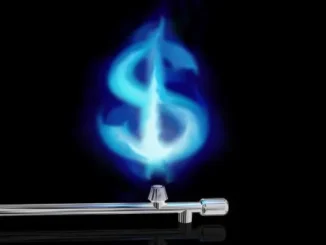
Crude oil futures were sharply lower in mid-morning trade in Asia June 22 as a brief rebound in the previous session proved short-lived, with fears of demand destruction and a global economic slowdown still gripping financial markets.
At 10:23 am Singapore time (0223 GMT), the ICE August Brent futures contract was down $3.39/b (2.96%) from the previous close at $111.26/b, after earlier falling by more than $4/b, while the NYMEX August light sweet crude contract was down $3.64/b (3.32%) at $105.88/b.
A brief rally in the June 21 session that saw ICE Brent crude settle 0.5% higher quickly ran out of steam June 22. Analysts said the rebound was likely a technical bounce in what was still largely bearish sentiment for oil prices and the broader financial markets.
“Headwinds surrounding tightening financial conditions and the tradeoff for an economic downturn continues to loom in the background, and the rebound may be attributed more towards technicals being traded at near-term oversold levels,” IG market strategist Yeap Jun Rong said in a June 22 note.
Vandana Hari, CEO of Vanda Insights, told S&P Global Commodity Insights June 22: “The reasons for the tumble are not entirely clear, which means the crude complex could be in for another whiplash of volatility.”
Hari cited the lockdown in China’s Shenzhen amid a COVID-19 outbreak there and Singapore reporting the country’s first imported monkeypox case June 21 as likely contributing to the souring in sentiment.
Decline ‘limited’
Market watchers said any price decline should be limited as oil markets remained tight, with refined product inventories worldwide still hovering at historical lows.
Oil trader Vitol’s CEO Russel Hardy said June 21 the company expected to see some 2 million-3 million b/d of global oil demand growth in 2023 despite concerns over “runaway prices”, with oil supplies struggling to keep up with the increase.
“It is tough to see markets really giving up much ground until we see some abatement in demand. We are still really not back to 2019 demand levels for gasoline and jet fuel. All in all, that is fairly supportive of prices,” he told the Qatar Economic Forum in Doha.
The US Energy Information Administration meanwhile said June 21 the US’ capacity to refine crude oil into fuel and other products fell below 18 million b/d at the beginning of 2022 and hit its lowest level since 2014.
The dip comes amid refinery closures in recent years due to hurricane damage, pandemic impacts, high operational costs, the inability to complete sales, weaker future demand forecasts, or from conversions to produce more renewable fuels.
Dubai crude swaps and intermonth spreads were mostly lower in mid-morning trade in Asia June 22 from the previous close.
The August Dubai swap was pegged at $100.72/b at 10 am Singapore time (0200 GMT), down $3.75/b (3.59%) from the June 21 Asian market close.
The July-August Dubai swap intermonth spread was pegged at $3.50/b at 10 am, down 8 cents/b over the same period, and the August-September intermonth spread was unchanged at $2.50/b.
The August Brent/Dubai EFS was pegged at $11.20/b, down 7 cents/b.
Source: Spglobal.com



